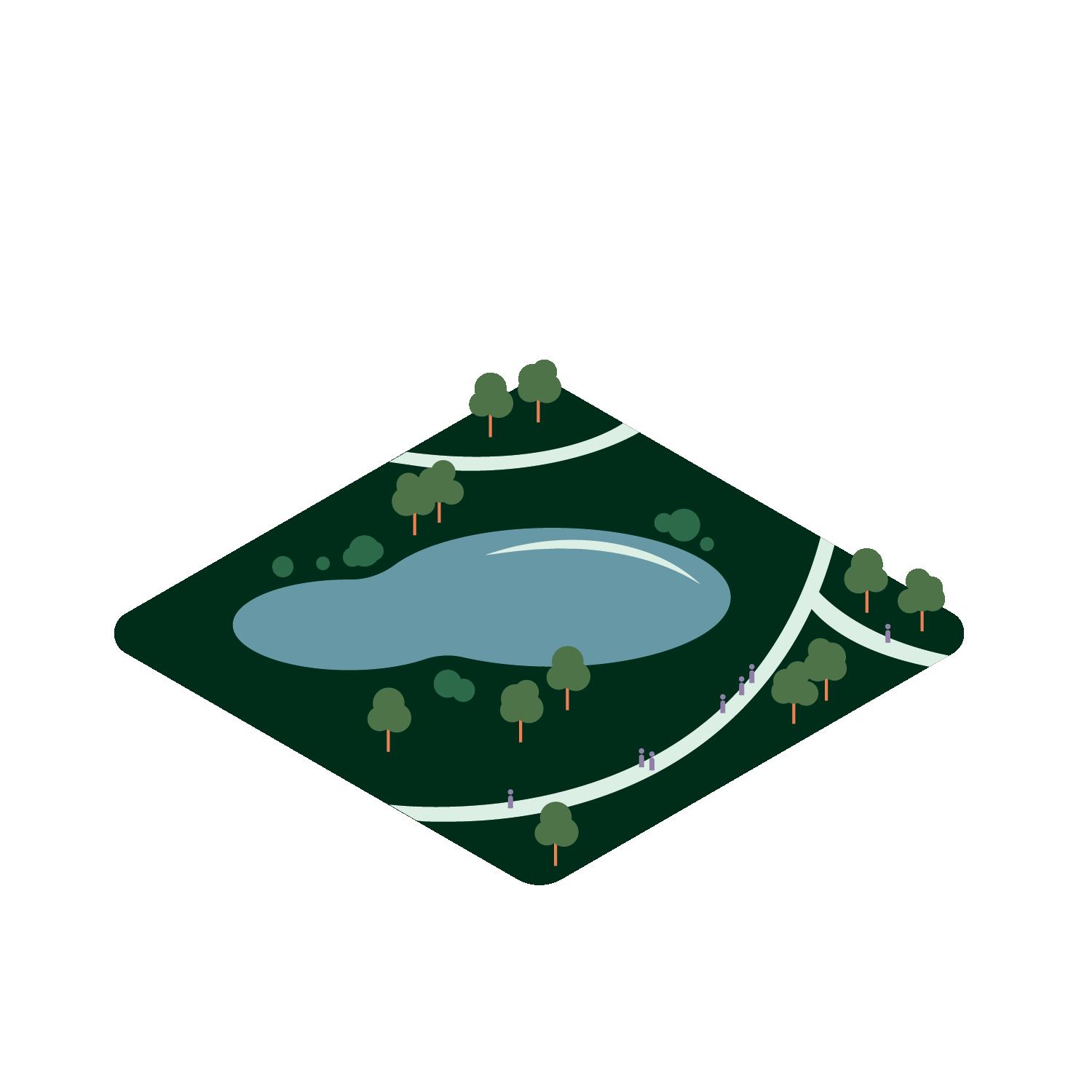Wetlands
An MKSK field guide for communities and developers with goals to restore habitats and combat climate change by sequestering carbon out of the atmosphere.

LAB FOR CLIMATE & BIODIVERSITY RESILIENCE

An MKSK field guide for communities and developers with goals to restore habitats and combat climate change by sequestering carbon out of the atmosphere.

LAB FOR CLIMATE & BIODIVERSITY RESILIENCE



Wetlands are habitats that occupy low flat places in the land where water naturally slows and pools. Nutrients abound in wetlands, brought in with surface runoff in the form of sediments and organic detritus. These wet, nutrient rich conditions make wetlands extremely biologically productive, the most productive ecosystems in temperate climates, rivaling rain forests and coral reefs for their species diversity and shear biomass. 40% of the world’s species live and breed in wetlands, and 1 billion people depend on wetlands for their livelihoods. But, their advantage is also their disadvantage – runoff that carries nutrients also brings in chemicals, making wetlands the most susceptible habitats to pollution.
Before European settlement, wetlands covered 10% to 12% of the continental US. A little more than half of these were lost between the 1790’s and the 1990’s, mostly to agriculture and, more recently, to urban expansion. Agriculture and landscape architecture manuals of the 19th century extolled the virtues of draining marshes to mitigate foul air, and state and federal legislation supported filling in wetland.

There are many types of wetlands. Marshes dominated by reeds and grasses, swamps dominated by trees and shrubs, and bogs and fens dominated by various types of peat. There are fresh and salty versions of each of these, various association with streams, lakes, and oceans, and wetland change with latitude and climate.
Despite environmental preservation efforts through the first half of the 20th century, the legislative tide did not turn until the 1977 amendment to the Clean Water Act, which created the current practices of protecting wetlands with riparian buffers and cleaning and controlling runoff. The roughly 110 million acres of wetlands that remain in the lower 48 States (5.5% of total land area), are now relatively well protected. However, the nearly five decades since 1977 have seen losses of about 1/2% of remaining wetlands (about 1/2 million acres) per decade.

Wetland restorations begins with careful planning. Research historic maps to see where wetlands existed in the past and what form they took. These low lying areas are the sites most likely to be successful and the least expensive to develop as wetlands.
Study the hydrology of the site, the soils and the endemic vegetation found in nearby wetlands.
Remove contaminated soils. Areas where sediments accumulate are most likely to be contaminated.
Remove invasive species, with a combination of controlled burns, mechanical removal and herbicides.
Place clean sand as the substrate for the wetland and overlay with rich organic soils to jumpstart the nutrient rich vegetative cycle.
Create a varied ground surface within the wetland – shallows and deeper areas – to support diverse plant communities and promote sediment deposition.
Seeding for erosion protection may be required to compete with and exclude invasive species during the grown in period.
Plant trees, shrubs, wetland grasses and wildflowers.
Choose plant species with high biomass production and deep root systems to maximize carbon capture and storage. Where feasible, include a peat rich planting palette, which is especially successful at capturing carbon.
Use endemic vegetation to restore wetlands, adapted to the specific conditions. Monitor for and prevent the growth of invasives.
Incorporate a mix of emergent, floating, and submerged vegetation to create a diverse ecosystem.

Have the installation contractor maintain and monitor the wetland for a minimum of 3 years. It is important to have a contractor with the right equipment available for follow up.
Monitor the wetland for invasive species. If they appear in the wetland, remove them as soon as possible. The longer they remain and produce seeds, the harder they are to eradicate.
Monitor water level carefully, keeping it as close to the natural seasonal cycle of inundation and release as possible. This balances emissions and keeps the wetland naturally sequestering carbon. Sudden over saturation causes an increase in the generation of methane, a potent greenhouse gas. Prolonged low water causes carbon dioxide to be released.
Minimize steep slopes at the wetland perimeter, to prevent erosion, and implement measures that trap sediment in the wetland. Sediments store significant amounts of carbon.
Never drain or dewater wetlands. Drying the organic soils leads to decomposition and the release of carbon dioxide.
Control fires in wetlands, especially during drought.
The capacity of wetlands to sequester carbon is greater than any other habitat on the planet, at rates about 4 times the average habitat.
The benefits of wetlands include protecting and improving water quality, providing fish and wildlife habitats and storing floodwaters.
Wetlands provide great resources of food that attract many animal species and support biodiversity.
Wetlands can be beautiful amenities that provide unique opportunities for passive recreation and education, in parks, campuses, natural areas, and along infrastructure corridors.

MKSK is committed to designing the change our world needs, discovering new solutions and building new ways of working. Every project is an opportunity to address climate change and loss of biodiversity in the design and planning of communities, landscapes, and cities. MKSK can assist in the design and planning of prairies, and other habitat restoration and carbon sequestering landscapes, to help fulfill the environmental stewardship goals of our commercial, institutional, industrial and public clients.
Contact:
MKSKLAB@mkskstudios.com MKSKstudios.com


LAB FOR CLIMATE & BIODIVERSITY RESILIENCE